This is the third post in three days about the Iowa State Fair. We only spent part of the day there, but took in as much as we could. Among the sights was the Agriculture Building, a bustling forum for—as the title of this post reveals—honey, eggs, butter—and so much more. As those of you who have been following these state fair posts might surmise, Iowa is mostly rural, with just a few large cities sprinkled in between, mostly along the Interstate 80 corridor. The Iowa State Fair takes place in the state’s capital of Des Moines, where it showcases all things agricultural in the state. The fair is one of the oldest, largest and best known state fairs in the country—large enough, certainly, that many families camp adjacent to the fairgrounds, the parking lot always fills up, and residences surrounding the fairgrounds charge $5 or $6 a spot on their front lawns for the privilege of parking your vehicle there all day. After the fair, ticket sales are counted to gauge attendance. Last year, for example, there were 1,047,246 fairgoers who braved the heat, humidity and occasional rainy weather that is typical of August. Attendance for 2014 also tops the million mark. In 1987, the Iowa State Fair was named to the National Register of Historic Places.
But I’ve strayed a bit from the Agriculture Building, which is where Iowa’s farm producers share some of their produce and seek to educate the public about the importance of what grows on the land. As Iowa agronomist, humanitarian and Nobel laureate Norman Borlaug said, “Civilization as it is known today couldn’t have evolved nor can it survive without an adequate food supply.” So, downstairs in the two-floor Agriculture Building you’ll see ample evidence of Iowa’s food supply: award-winning pumpkins, squash, potatoes and more; displays of native Iowan flowers and plants; seed art produced by youth, and much more. Often you’ll also be able to taste samplings of beef and egg recipes from the the Iowa Beef Industry Council, and the Iowa Egg Council. You can pick up these recipes as well, or visit their Web sites.
In 2011, the Iowa Soybean Association—along with 35 partners from the soybean, corn, pork, beef, egg, turkey and dairy industries—created the Iowa Food & Family Project to acquaint Iowans with the farmers around them, and to develop a better understanding of how food is grown. In keeping with that goal, here are a few rural statistics about Iowa that you may not have known:
- There are almost 93,000 farms in Iowa, and 10% of the world’s best farmground can be found in Iowa.
- Iowa ranks first in the nation for soybean production, or 15% of all soybean crops grown in the U.S.
- Iowa produces more pigs than any other state, about a third nationally, creating almost 40,000 jobs at the same time.
- Iowa is especially known for its corn production, growing more corn than most countries; if Iowa were a country, it would rank 4th on an international scale.
- The number one supplier for turkey meat to Subway and Jimmy John’s is Iowa, whose farmers raise 11 million turkeys annually.
- Iowa produces 15 billion eggs annually, or more eggs than any other state, the equivalent of an egg for everyone in the world for two days.
The Agriculture Building bustles with activity, which is apparent from the photo below. The second floor is not a full floor, but instead a railed walkway that rings the perimeter of the building with educational booths about soybeans, butterflies, beekeeping, and other topics, and vendor booths that sell Iowa-made jams and jellies, nuts, cooking tools and cleaning products.
One of the booths was staffed by a gentleman who sold ostrich eggs and offered ostrich egg recipes. If you have never seen the shell of an ostrich egg, it’s sturdy, thick and shiny.
Another educational booth was about the migration patterns of monarch butterflies and their role in pollination.
We always stop at the booth of the Iowa Honey Producers Association, where we purchase Iowa-grown honey. Honestly, I don’t think our palate is sensitive enough to note the difference between this honey and store-bought honey, but we love it nonetheless. If you click on this photo, you’ll be able to zoom in on the recipes.
The Iowa Honey Producers Association encourages everyone to help honey bees pollinate by limiting the use of pesticides, and by using liquid instead of granular versions if you must, because bees sometimes mistake the solid form of pesticides for pollen and take it back to the hive. Additionally, people are asked to plant bee-friendly flowers and plants, especially perennials, such as buttercups, crocus, echinacea, geraniums, floxglove, hollyhocks, roses, sedum, snowdrop, pansy and other plants. You can download a bee care brochure from the Web site if you’d like to learn more.
The highlight of our visit to the Agriculture Building, every time we come to the Iowa State Fair, is the Butter Cow and other sculptures. The first Butter Cow was sculpted in 1911 by J.K. Daniels as a way for the dairy industry to promote itself. The sculpting knife was passed several times to different people, with each person creating memorable sculptures. By the time John and I moved to Iowa late in 1991, Norma “Duffy” Lyons had been sculpting for 31 years. One of Duffy’s largest butter sculptures was a re-creation of Leonardo da Vinci’s “The Last Supper,” sculpted from 2,000 pounds of butter. She was succeeded in 2006 by Sarah Pratt, and in 2011 the Butter Cow celebrated the century mark. The theme this year was “Field of Dreams,” based on the 1989 baseball/corn film by the same name, produced in Iowa.
Sarah Pratt carved her ninth Butter Cow at the fair this year, and taught her daughters a little bit about the basics of butter sculpture. She describes her process, which involves praying, in the video profile below from Iowa Public Television (IPTV).
Ice carver Bill Gordish, who as a hotel chef for 18 years did ice carvings for weddings and banquets, creates fantastical sculptures at the fair. They last the entire eleven days in a refrigerated case. The photos are impossible to shoot without reflections, as are the butter sculptures, because lights are shining directly on them. In the upper right photo, you can see a working clock with a swinging pendulum.
In this 2011 Iowa Public Television video, which profiles Bill Gordish during the fair’s 100th anniversary, he uses a chainsaw to carve his beautiful sculptures. It takes Bill about 15 to 20 minutes to make each carving.
In tomorrow’s post, I’ll share with you our fair finds, the items we didn’t think we’d purchase but got “sucked in.” It’s all part of the fun!
© 2o14 Judy Nolan. All rights reserved.
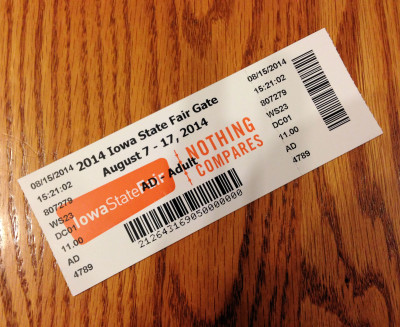
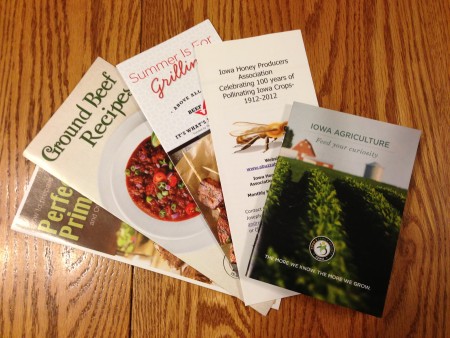

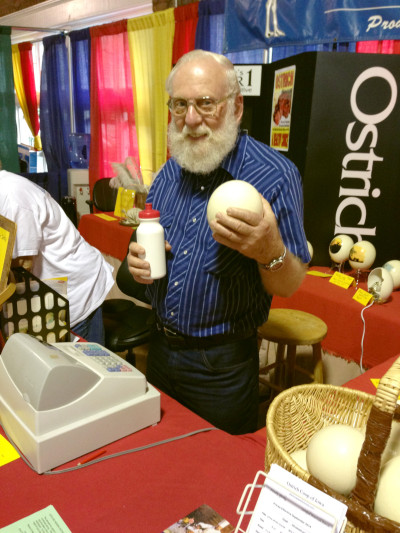
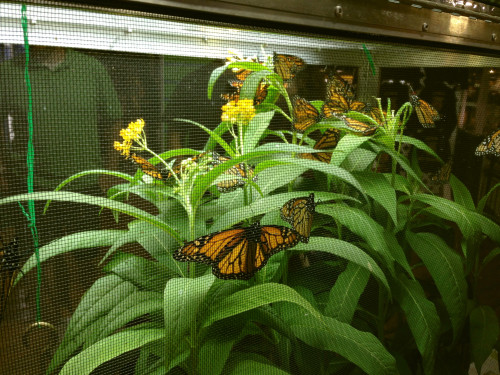
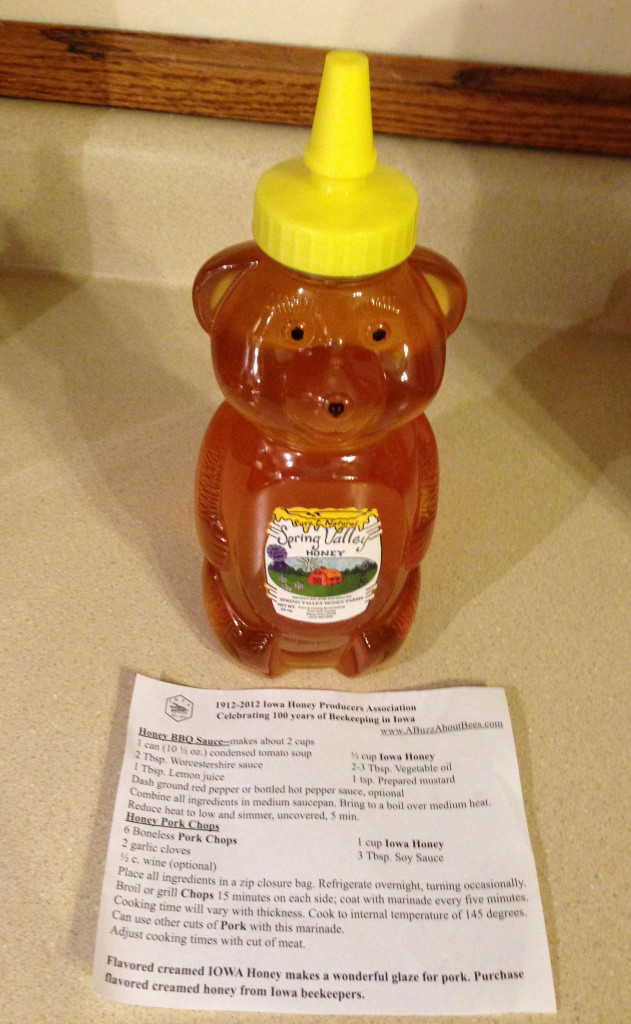

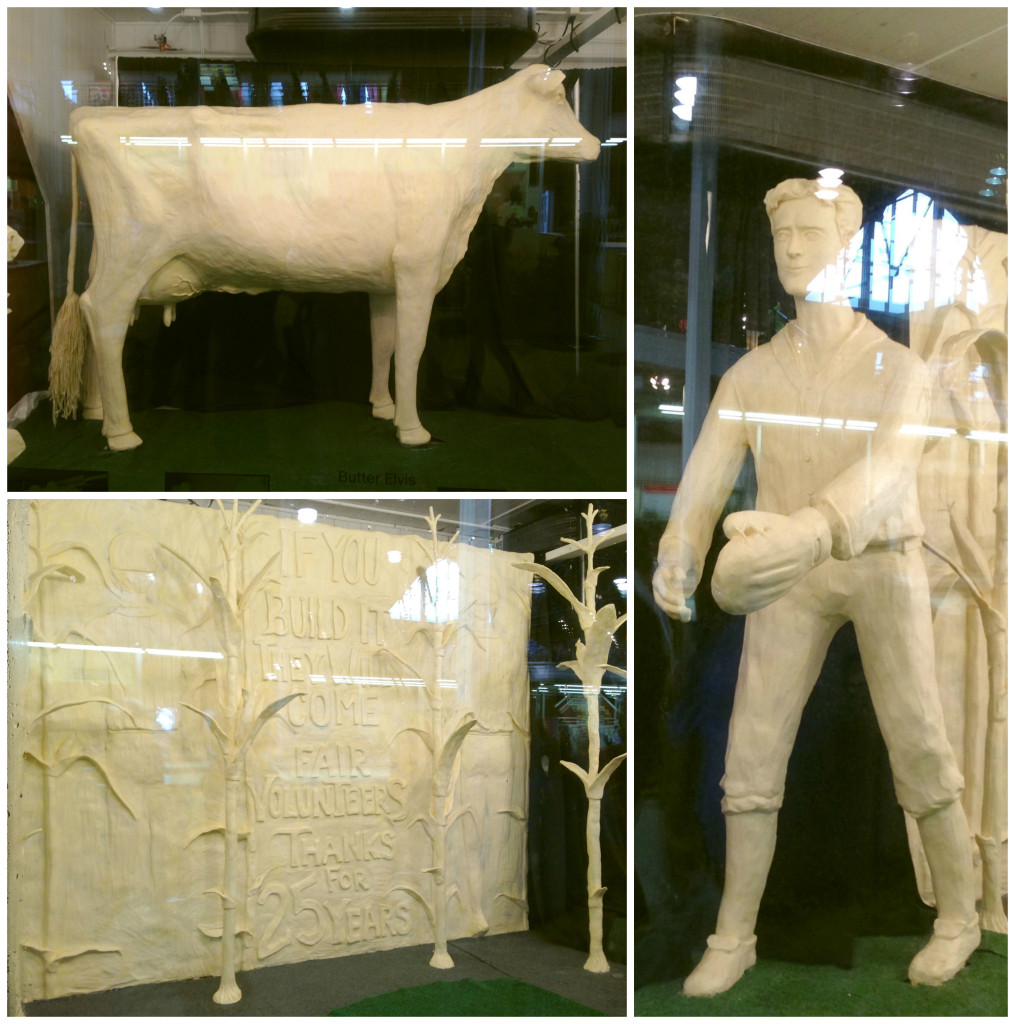
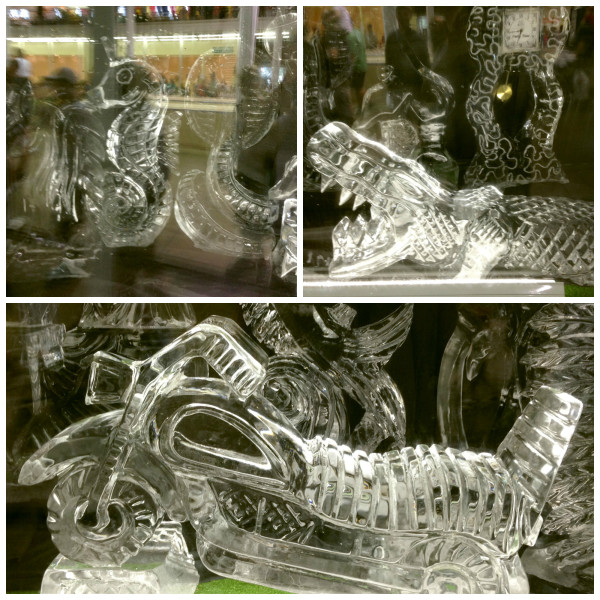
Ahh– another fun day at the fair. Those ostrich eggs are HUGE! Love the butter sculptures.
I love reading all those great statistics about Iowa and farming 🙂
The butter cow is a must see each time we visit. And those ice sculptures are amazing as well!